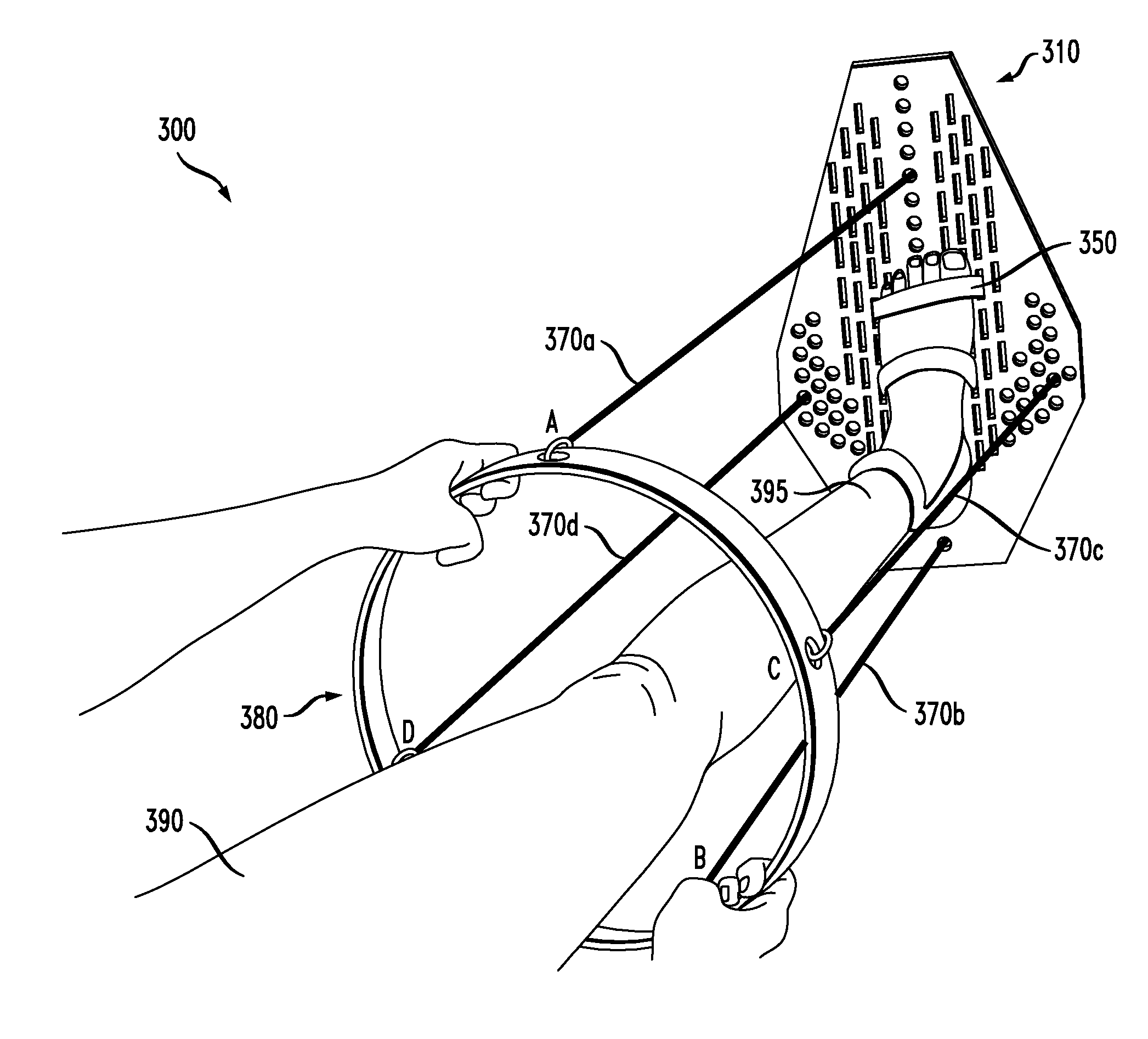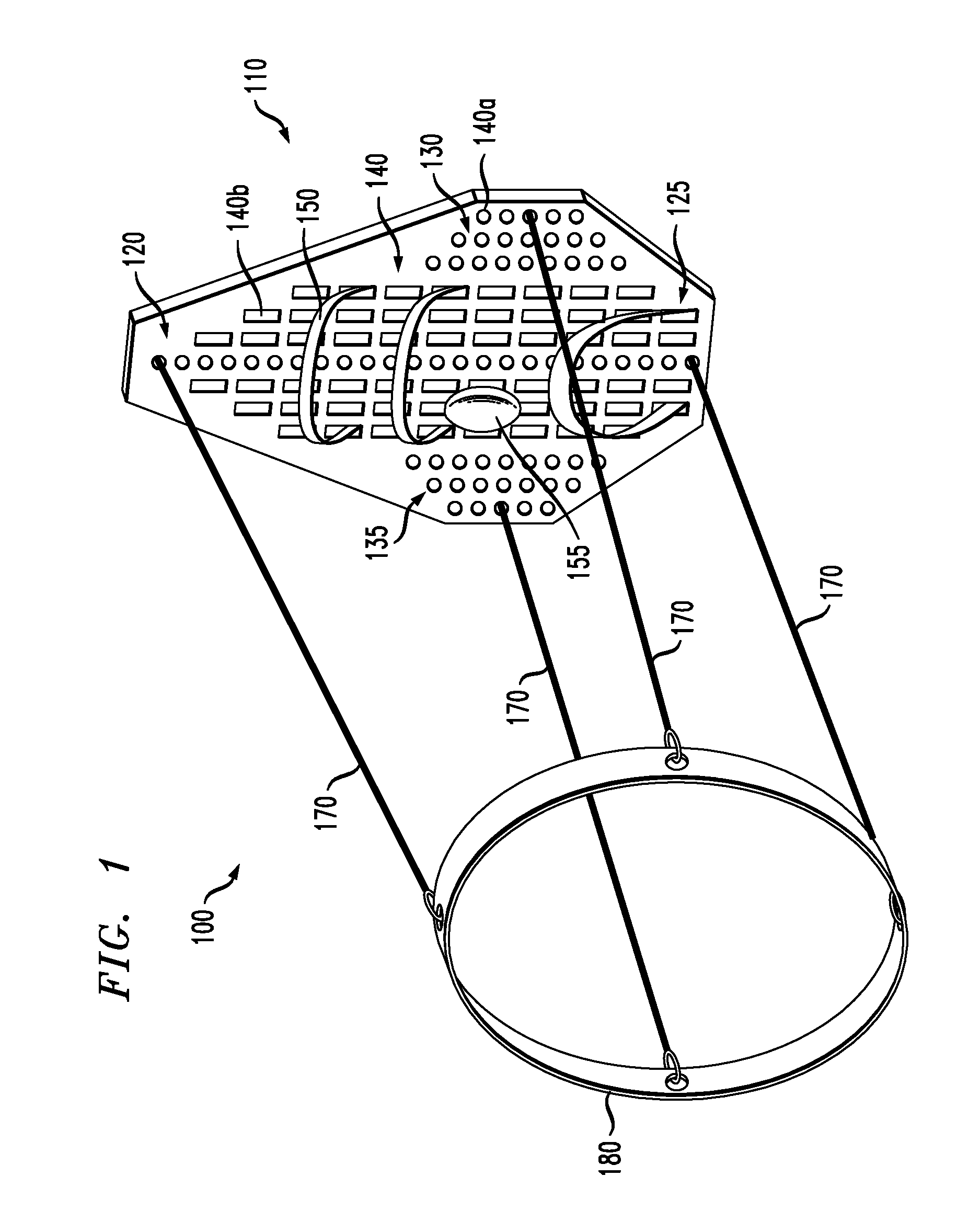Orthopedic rehabilitation mechanism employing a foot support having a first portion and a second portion configured to rotate with respect to one another
a technology of orthopaedic and orthopaedic joints, applied in orthopaedic devices, physical therapy, gymnastics, etc., can solve the problems of inability to achieve prompt rehabilitation of affected joints, time-consuming, inefficient, unsafe,
- Summary
- Abstract
- Description
- Claims
- Application Information
AI Technical Summary
Benefits of technology
Problems solved by technology
Method used
Image
Examples
Embodiment Construction
[0017]Referring initially to FIG. 1, illustrated is a plan view of one embodiment of an orthopedic rehabilitation device 100. The orthopedic rehabilitation device 100 illustrated in FIG. 1, among other purposes, is designed to rehabilitate the bones, muscles, tendons and ligaments associated with a number of different joints. In an exemplary embodiment of the disclosure, however, the orthopedic rehabilitation device 100 is advantageously configured to rehabilitate the bones, muscles, tendons and ligaments associated with the ankle. Therefore, the orthopedic rehabilitation device 100 functions as an Ankle Recovery Mechanism (The FASST System™).
[0018]The orthopedic rehabilitation device 100 illustrated in FIG. 1 initially includes a foot support element 110. The foot support element 110, as will be shown in subsequent figures, is designed to substantially support a user's foot or ankle. The foot support element 110 may comprise a number of different materials and shapes while remainin...
PUM
 Login to View More
Login to View More Abstract
Description
Claims
Application Information
 Login to View More
Login to View More - R&D
- Intellectual Property
- Life Sciences
- Materials
- Tech Scout
- Unparalleled Data Quality
- Higher Quality Content
- 60% Fewer Hallucinations
Browse by: Latest US Patents, China's latest patents, Technical Efficacy Thesaurus, Application Domain, Technology Topic, Popular Technical Reports.
© 2025 PatSnap. All rights reserved.Legal|Privacy policy|Modern Slavery Act Transparency Statement|Sitemap|About US| Contact US: help@patsnap.com



